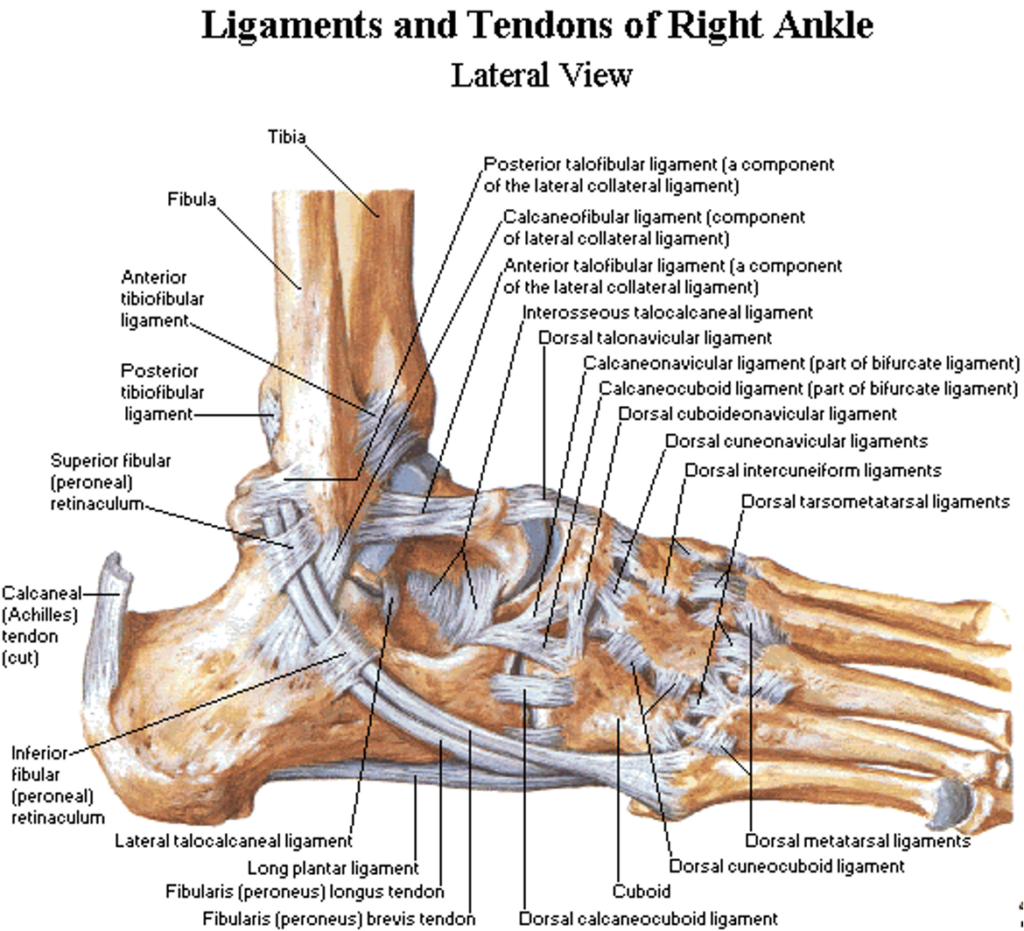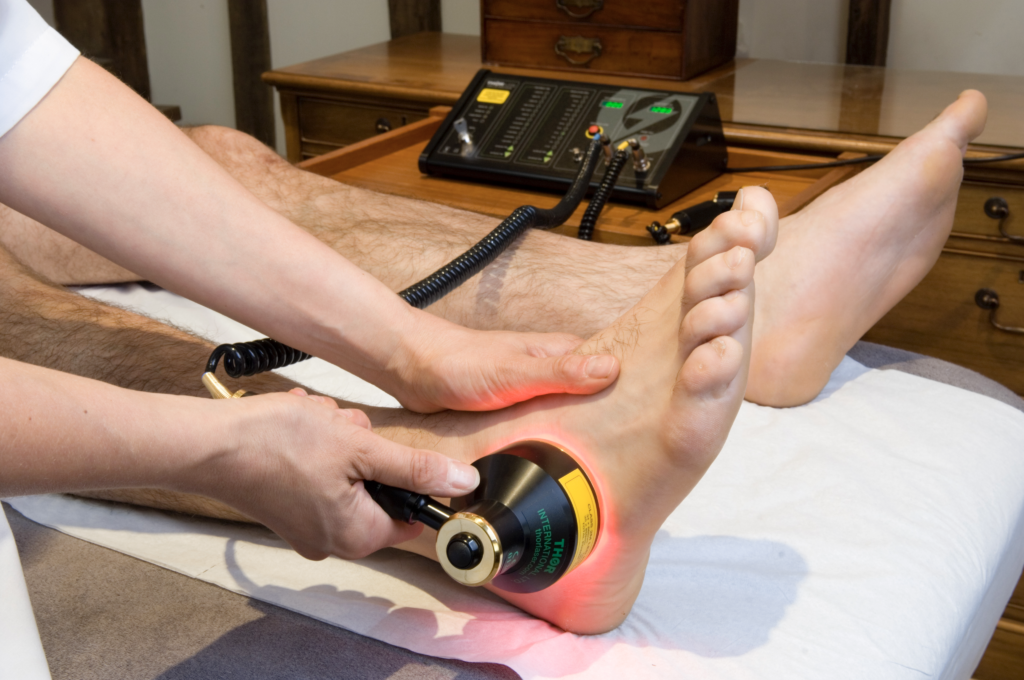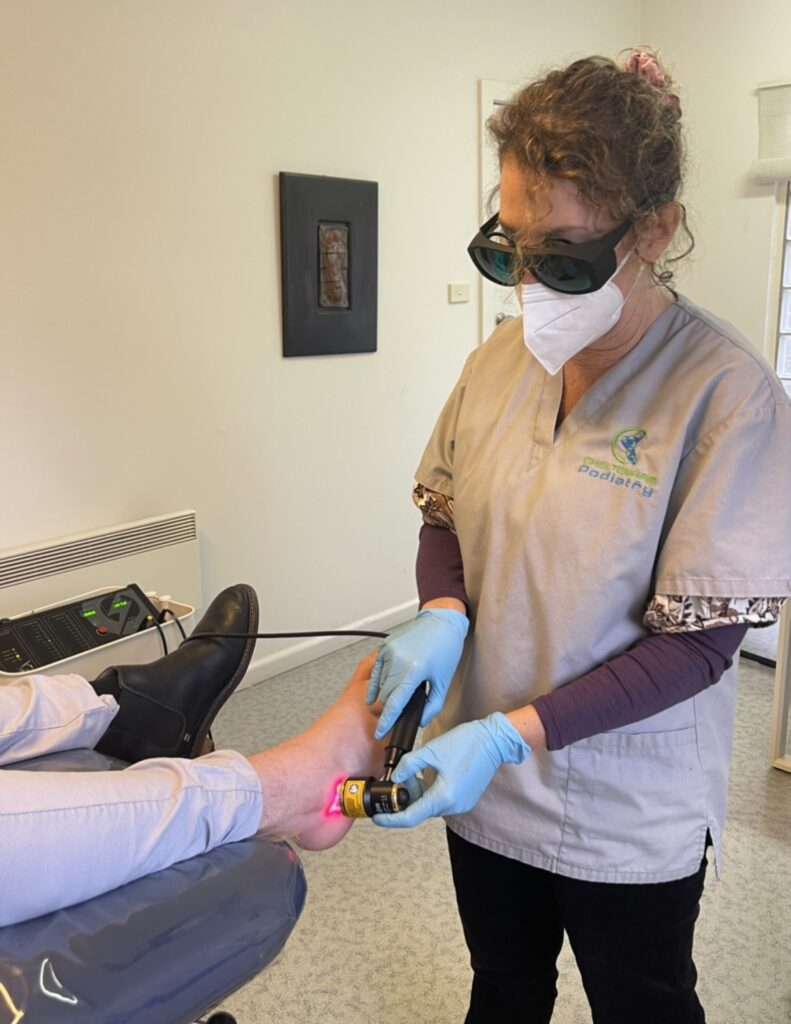Understanding Ankle Arthritis and Regenerative Treatment Options in Podiatry
Ankle arthritis is a common but often misunderstood condition that affects the smooth functioning of the ankle joint. The ankle, composed of bones, cartilage, ligaments, tendons and nerves is a crucial part of the body’s mobility system. When arthritis strikes this joint, it can lead to stiffness, pain, swelling, and a loss of function. This blog will explore what ankle arthritis is, the causes, and how regenerative podiatry can offer innovative treatments to manage this condition.

What is Ankle Arthritis?
Arthritis refers to the inflammation of the joints. In the case of the ankle, this condition can be the result of wear and tear (osteoarthritis), an autoimmune disease (eg rheumatoid arthritis), or post-traumatic arthritis, which can occur after an injury such as a fracture or severe sprain. While osteoarthritis and rheumatoid arthritis are more common in older adults, post-traumatic arthritis can affect younger individuals who have experienced joint injuries and later in life.
Symptoms of Ankle Arthritis:
- Pain and tenderness in the joint
- Swelling and stiffness, especially after periods of inactivity
- Reduced range of motion or difficulty walking
- Grinding or clicking, catching sensations during movement
Without treatment, ankle arthritis can severely limit a person’s mobility and quality of life. Traditional management may include pain medications, physical therapy, or in advanced cases, surgery. However, regenerative medicine offers new, less invasive alternatives that aim to restore the joint function and reduce pain.
Regenerative Treatment Options for Ankle Arthritis
Regenerative podiatry focuses on encouraging the body’s natural healing processes to reduce pain and inflammation. Below are the primary regenerative treatments that can be considered for ankle arthritis:
- Platelet-Rich Plasma (PRP) TherapyPRP therapy involves using the patient’s own blood, which is processed to concentrate the platelets and adjust appropriate white blood cell dosage. These platelets are rich in growth factors that stimulate healing in the damaged ankle joint, and the the anti inflammatory white blood cells as lymphocytes and monocytes. Once injected into the affected area, PRP helps reduce inflammation, pain , and enhance overall joint function.It may slow further joint pathology. How it works: A sample of blood is drawn, spun in a centrifuge to separate the components, and the concentrated platelets and white blood cells are then injected into the ankle, and ligaments in safe , sterile techniques. It’s a safe and natural method that can accelerate the healing process.
- Prolotherapy Here at cheltenham Podiatry we use two types of Prolotherapy. Classic and Perineural. Classic is designed to reduce pain at joints, repair damaged ligaments and tendons. it stimulates the body’s healing response, promoting the growth of new tissue. Prolotherapy can be particularly useful for ankle arthritis as it strengthens weakened ligaments, thus improving joint stability and reducing pain. perineural is only 5% glucose and used to clam irritated nerves of the joint. How it works: By triggering the body’s natural repair process, prolotherapy can help regenerate soft tissue and strengthen the support structures around the ankle joint.
- Photobiomodulation (Laser Therapy)Photobiomodulation, also known as laser therapy ( cold or low level laser), uses specific wavelengths of light ( red and infra red light therapy) to reduce inflammation and promote tissue repair. This non-invasive treatment has been shown to increase circulation, reduce pain, and speed up the healing of damaged tissues in arthritic joints, and damaged ligaments, tendons and muscles. It also helps to restore malfunctioning nerves. How it works: The laser stimulates cells in the damaged tissue to produce energy more efficiently, which accelerates healing, reduces inflammation, and relieves pain. This treatment is painless and requires no recovery time, making it an attractive option for managing arthritis.


Integrating Regenerative Medicine into Ankle Arthritis Management
At Cheltenham Podiatry, our approach to treating ankle arthritis combines a thorough understanding of musculoskeletal health with the latest regenerative techniques. We believe in using minimally invasive options where appropriate, like laser and ultrasound-guided injections, to ensure accuracy and effectiveness. This allows us to target the affected areas precisely, helping you recover faster with less discomfort. We then integrate other treatments as physical therapy, orthotics and appropriate footwear for long term relief.
Why Choose Regenerative Treatments?
- Non-surgical: Regenerative treatments offer an alternative to surgery, reducing recovery time and lowering the risk of complications. Or rather to try to delay surgery.
- Natural healing: By using your body’s natural healing mechanisms, these treatments can enhance recovery and potentially slow the progression of arthritis.
- Long-lasting relief: While the results vary from patient to patient, many experience prolonged relief from pain and improved joint function after regenerative treatments.
Conclusion
Ankle arthritis can be a debilitating condition, but with advancements in regenerative medicine, there are new ways to manage the pain, restore function, and improve quality of life. From PRP to prolotherapy and photobiomodulation, these innovative treatments harness the body’s own healing powers to target the root cause of arthritis rather than just masking the symptoms.
If you’re suffering from ankle arthritis and looking for alternative treatment options that focus on healing and long-term recovery, Cheltenham Podiatry is here to help. Our podiatrists have over 10 years in experience in these treatments, are involved in teaching these techniques, and use latest in ultrasound guidance to ensure precise placement of the solution for better outcomes. Book a consultation today to discuss if this is suitable for your condition.
Latest News
Ankle Arthritis
Understanding Ankle Arthritis and Regenerative Treatment Options in Podiatry Ankle[…]




